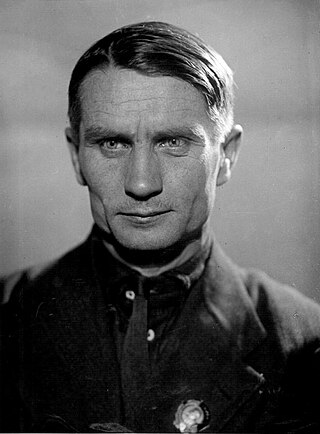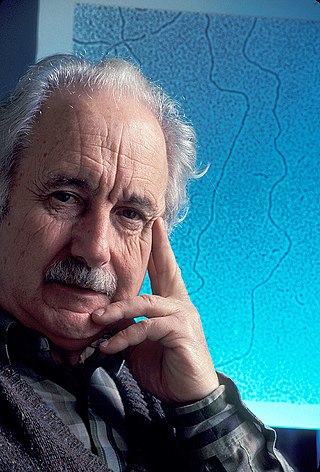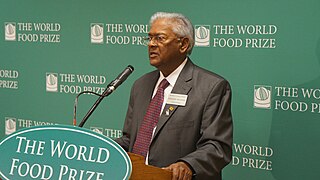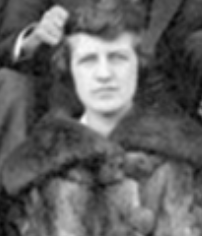Related Research Articles

The potato is a starchy root vegetable native to the Americas that is consumed as a staple food in many parts of the world. Potatoes are tubers of the plant Solanum tuberosum, a perennial in the nightshade family Solanaceae.

Spearmint, also known as garden mint, common mint, lamb mint and mackerel mint, is native to Europe and southern temperate Asia, extending from Ireland in the west to southern China in the east. It is naturalized in many other temperate parts of the world, including northern and southern Africa, North America, and South America. It is used as a flavouring in food and herbal teas. The aromatic oil, called oil of spearmint, is also used as a flavoring and sometimes as a scent.

Trofim Denisovich Lysenko was a Soviet agronomist and scientist. He was a strong proponent of Lamarckism, and rejected Mendelian genetics in favour of his own idiosyncratic, pseudoscientific ideas later termed Lysenkoism.

Norman Ernest Borlaug was an American agronomist who led initiatives worldwide that contributed to the extensive increases in agricultural production termed the Green Revolution. Borlaug was awarded multiple honors for his work, including the Nobel Peace Prize, the Presidential Medal of Freedom and the Congressional Gold Medal, one of only seven people to have received all three awards.

Nikolai Ivanovich Vavilov was a Russian and Soviet agronomist, botanist and geneticist who identified the centers of origin of cultivated plants. He devoted his life to the study and improvement of wheat, maize and other cereal crops that sustain the global population.

The International Maize and Wheat Improvement Center is a non-profit research-for-development organization that develops improved varieties of wheat and maize with the aim of contributing to food security, and innovates agricultural practices to help boost production, prevent crop disease and improve smallholder farmers' livelihoods. CIMMYT is one of the 15 CGIAR centers. CIMMYT is known for hosting the world's largest maize and wheat genebank at its headquarters in Mexico.

Theodor Otto Diener was a Swiss-American plant pathologist. In 1971, he discovered that the causative agent of the potato spindle tuber disease is not a virus, but a novel agent, which consists solely of a short strand of single-stranded RNA without a protein capsid, eighty times smaller than the smallest viruses. He proposed to name it, and similar agents yet to be discovered, viroids. Viroids displaced viruses as the smallest known infectious agents.
Rebecca J. Nelson is an American biologist and a professor at Cornell University and a MacArthur Foundation Fellow.

Joseph Charles Arthur was a pioneer American plant pathologist and mycologist best known for his work with the parasitic rust fungi (Pucciniales). He was a charter member of the Botanical Society of America, the Mycological Society of America, and the American Phytopathological Society. He was an elected member of both the American Philosophical Society and the American Academy of Arts and Sciences. He was a recipient of the first Doctorate in Sciences awarded by Cornell University. The standard author abbreviation Arthur is used to indicate this person as the author when citing a botanical name.
Derald George Langham was an American agricultural geneticist, sesame researcher, and founder of the Genesa Foundation.

Puccinia menthae is a fungal plant pathogen that causes rust on mint plants. It was originally found on the leaves of Mentha aquatica.

The American Phytopathological Society (APS) is an international scientific organization devoted to the study of plant diseases (phytopathology). APS promotes the advancement of modern concepts in the science of plant pathology and in plant health management in agricultural, urban and forest settings.

A Vavilov center or center of origin is a geographical area where a group of organisms, either domesticated or wild, first developed its distinctive properties. They are also considered centers of diversity. Centers of origin were first identified in 1924 by Nikolai Vavilov.
Jack Rodney Harlan was an American botanist, agronomist, plant collector, and campaigner for crop plant biodiversity conservation.

Lawrence Ogilvie was a Scottish plant pathologist who pioneered the study of wheat, fruit and vegetable diseases in the 20th century.
Redcliffe Nathan Salaman was a British physician, biologist who pioneered the breeding of blight-free potatoes, Jewish nationalist, race scientist and key figure in the Anglo-Jewish community in the 20th century. His groundbreaking 1949 book The History and Social Influence of the Potato established the history of nutrients as a new literary genre.

Herbert Hice Whetzel was an American plant pathologist and mycologist. As a professor of plant pathology, he led the first department of plant pathology at an American university and founded the Cornell Plant Pathology Herbarium (CUP).

Dr. Sanjaya Rajaram was an Indian-born Mexican scientist and winner of the 2014 World Food Prize. He was awarded this prize for his scientific research in developing 480 wheat varieties that have been released in 51 countries. This innovation has led to an increase in world wheat production – by more than 200 million tons – building upon the successes of the Green Revolution. The Government of India awarded him India's fourth- and third-highest civilian awards Padma Shri (2001) and Padma Bhushan (2022).

Helen Alice Purdy Beale, was an American virologist who made significant contributions to the fields of plant virology and immunology. During her work on Tobacco mosaic virus, Beale invented standard serology tools that are used today in research practices and medical diagnosis. She has been revered as the "mother of plant virology and serology".
Frank Dunn Kern was an American plant pathologist and university administrator. He was a faculty member at Pennsylvania State University, holding appointments as Head of the Department of Botany and Dean of the Graduate School. He was an expert on the Pucciniales.
References
- 1 2 Social Security Death Index, 1935-2014. Social Security Administration.
- ↑ "The World Food Prize: 1990 Laureates". Archived from the original on 2009-07-31.
- ↑ "Potato People and Places". The Potato Museum . 2005-08-12. Retrieved 2021-09-18.
- 1 2 3 4 5 Niederhauser, John S. (2012). Peterson, Paul D.; Turner, R. Steven; Griffith, Clay S. (eds.). Recollections of a life in science and agriculture. St. Paul, Minnesota: American Phytopathological Society. pp. vii+142. ISBN 978-0-89054-408-2. OCLC 794207319.
- 1 2 3 4 5 Niederhauser, John S. (1993). "International Cooperation in Potato Research and Development". Annual Review of Phytopathology . 31 (1). Annual Reviews: 1–25. doi: 10.1146/annurev.py.31.090193.000245 . ISSN 0066-4286. PMID 18643753.
- ↑ Peterson, Paul D. (2008). "Improving Potato Production in Mexico: John S. Niederhauser and Rockefeller Foundation-Sponsored Research during the 1950s and 1960s" (PDF). Rockefeller Archive Center Research Reports Online.
- ↑ Niederhauser, John S. The rust of greenhouse-grown spearmint, and its control (Thesis). Cornell University. AGRIS id US201300712225. SIDALC 012702. SIDALC 004689.
- ↑ Rockefeller Foundation. The Rockefeller Foundation Annual Report, 1960. New York. pp. xxv+393.